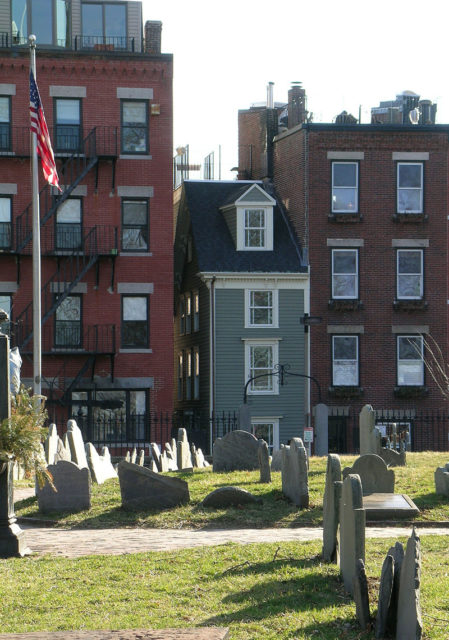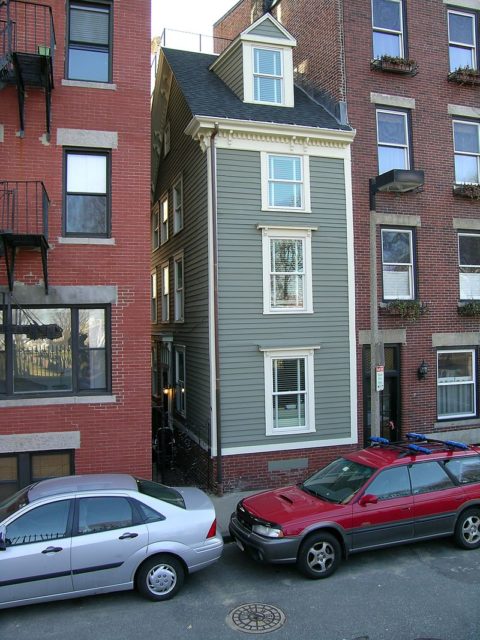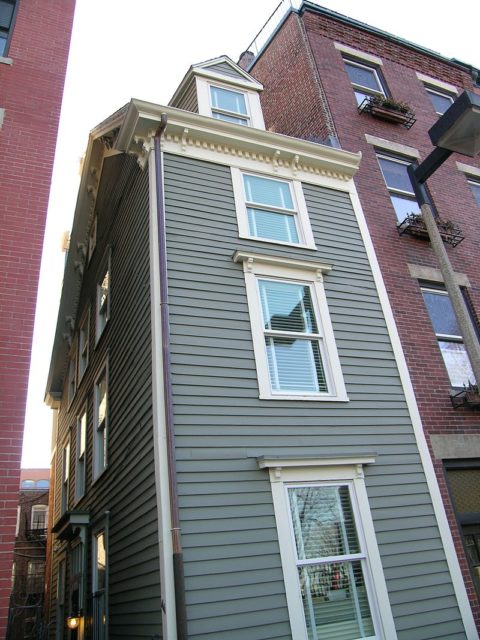In the North End of Boston, at 44 Hull Street, stands the Skinny House.
It is an extremely narrow four-storey house that is reported to have the “uncontested distinction of being the narrowest house in Boston”.
“As far as we know, it is the narrowest house in Boston”- notes the executive director of the Boston Landmark Commission.
At its widest point, it measures 10.4 feet width.

The house doesn’t have a front door, so it can only be entered by the alley. The back of the house is 9.25 feet wide. Inside the house, the walls are only 8.4 feet apart and none of them is over 9.2 feet apart.
At the narrowest interior point, it is only 6.2 feet wide, enough for an adult to stretch out their arms and touch both walls.
The house has only five doors, even though it has four storeys.
On the second floor is the living room and the bathroom, one of the few rooms separated by a door.
The last updated tax records, in June 2016, show that the owners are Spencer Welton and Jennifer Simonic who live, as Boston Globe noticed, “a vertical life”.
Jennifer explains:
“We had a party of 10 one New Year’s Eve, and when one person had to go to the bathroom, everyone had to move…Once, unknown people just walked into our backyard and sat on our picnic table…”
They said to us: “We won’t be long, we just want to take a couple of pictures”. That had been bizarre!
Per Welton, who has a degree in architecture, says: “Instead of doors, we have floors between each space.When guests stay over, we put a mattress down on the closet floor. Except for the sleeping in the closet, it seems that they like it.”

The house was built as a “spite house”, shortly after the American Civil War.
According to a local legend, two brothers inherited a piece of land from their father.
One of them was away, serving in the military, while the other built a large home on the property, leaving his brother only a very narrow part of the land which was too tiny to build.
When the other brother returned, he found his inheritance almost gone and built the narrow house to spite his brother by blocking out the sunlight and ruining his view.

According to a legend, its unnamed builder erected it to shut off air flow and cover light from the hoe of a hostile neighbor (also nameless) with whom he had a dispute…It is believed that it was built after 1874.
According to an archivist assistant at the Boston City Archives, the footprint of 44 Hull Street appeared in The Hopkins Atlas of 1874, Boston Proper. In 1884, the land was split into five lots.
The smallest of the lots measured only 274 square feet.
The tax records show that the house has 1,166 square feet of living space, two bedrooms, and one bathroom.
Here is another wacko “house” story from us: Trust us – Stump houses were a thing….
On January 1st, 2016, the total estimated value of the lot and the home was $526,400.
